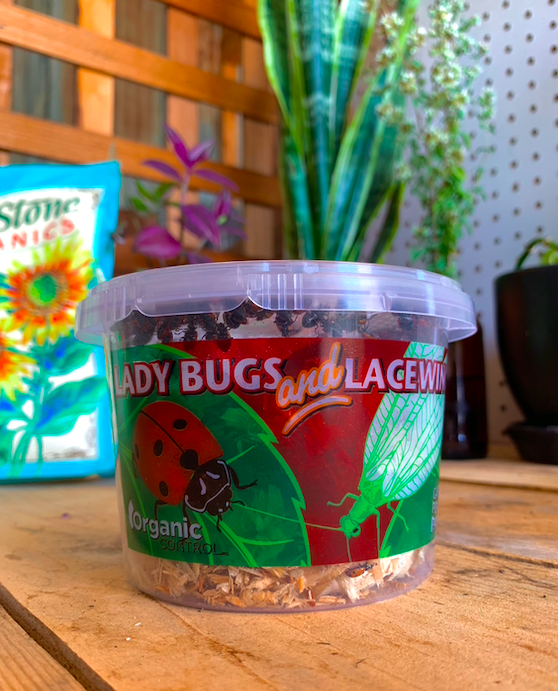
Ladybugs & Green Lacewings - 500 & 1000 ct
Ladybugs prefer to eat aphids and will devour up to 50 a day, but they will also attack scale, mealy bugs, boil worms, leafhopper, and corn ear worm. They dine only on insects and do not harm vegetation in any way.
Ladybugs should always be released after sundown since they only fly in the daytime. During the night, they will search the area for food and stay as long as there is food for them to eat. The more they eat the more eggs they lay and the more insect eating larvae you will have. It is best if the area has been recently watered. Ladybugs tend to crawl up and toward light. So release them in small groups at the base of plants and shrubs that have aphids or other insects, and in the lower part of trees.
Along with your ladybugs, you'll be give a smaller container of lacewings.
Green Lacewings are predators of many species of pest insects and mites. These attractive pale green insects are an effective natural enemy of aphids, mites, whiteflies, mealybugs, leafhoppers, and thrips. Sprinkle them around your plants. If you are putting them in trees, you can place small amounts in paper drinking cups and staple them to the leaves. The Lacewing will crawl out and up into the tree or plant. The larvae will feed for about 3 weeks, then they will roll up into a little white pupae and emerge as an adult in about 1 week ready to lay eggs! When looking for the newly hatched lacewing larvae, remember that they are quite small, about the size of the pale green or gray egg from which they came, so you may have difficulty seeing them.
